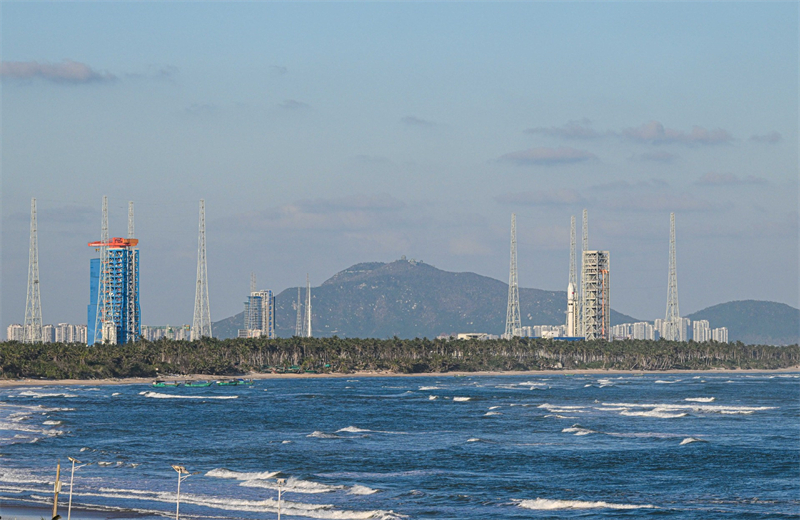
Hainan International Commercial Aerospace Launch Co said it will double its number of launch pads and push forward rocket-recovery technology, marking a major step in China's bid to build a globally competitive commercial space hub.
The company announced on Tuesday in Hainan province that it will expand from two pads to four, accelerate research and development, and optimize costs as it moves into high-performing operations and international development.
Located in Wenchang International Aerospace City, the site has shifted from construction to operations in just over two years. The first phase began in July 2022 and put two pads into service with dual-pad launches in late 2024 and early 2025. This summer it set a "two launches in five days" record, underscoring the push for regular, high-density missions.
READ MORE: Hainan making big strides with satellite tech
Phase II broke ground in January and will deliver Pads No 3 and No 4, along with a new technical area and telemetry station, by end-2026. Once completed, the facility will be able to handle more than 60 launches annually, with each pad supporting missions every 10 days- or even weekly — said Chairman Yang Tianliang.
Efficiency is central to the site's model. A "three-horizontal" system — covering transport, testing and launch — has halved rocket preparation time from around 20 days to 10, while also reducing construction outlays. Staffing will also be reduced from over 400 to about 100 per pad to optimize costs further.
Wenchang in Hainan offers geographical and policy advantages. Its latitude boosts payload capacity by 10-15 percent, while its coastal location eases sea transport and provides safe landing zones for reusable rockets.
The spaceport also benefits from Hainan Free Trade Port's zero-tariff and low-tax policies, fostering an innovation ecosystem spanning rockets, satellites, data services and even space tourism.
ALSO READ: New satellites strengthen space network
Rocket recovery is seen as key to cost reductions. With first-stage manufacturing accounting for more than 70 percent of launch expense, Yang said the company is building a sea-recovery vessel soon to support a "launch-recover-reuse" model and enable recovery missions for domestic rocket makers.
International cooperation is also expanding. Wenchang is partnering with the national deep space laboratory on four new centers for payload integration, deep-space research, industrial coordination and international exchange, said Wang Fengyu, deputy director of Wenchang International Aerospace City.
The city has also teamed up with Tsinghua University and other institutions on joint research and space-station support.
Ma Mengmeng contributed to this story.
Contact the writers at wangzhuoqiong@chinadaily.com.cn


